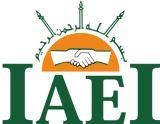ANALISIS PERSEPSI WAQIF PADA WAKAF TUNAI DI BWI SUMATERA UTARA
Abstract
The purpose of this study was to determine the perception of waqif on cash waqf at BWI North Sumatra. This study uses a descriptive qualitative method, by taking the object of research at BWI North Sumatra. As the research informant, Nazhir from BWI North Sumatra, the waqif. This study explains that there are 5 indicators used to measure the perception of waqif, namely internal indicators consisting of income, understanding and external indicators, namely information media, convenience and benefits of cash waqf at BWI SU. Based on the results of the data questionnaire assessment, that 73.3% of waqif stated that it was good from the income indicator. This means that waqifs have a good perception of cash waqf that the more prosperous the community, the greater the potential for cash waqf. From the indicators of understanding, 46.7% of waqifs said they were good with cash waqf. That is, waqif has a good perception of cash waqf in terms of understanding so that awareness arises in advancing the Islamic economy through cash waqf. From the information media indicators, 43.3% of waqif stated that they were neutral towards the perception of waqif in terms of access to information media. This means that BWI SU should further promote information media through online media in the digital era. From the convenience indicator 46.7% waqif answered well. This means that waqifs have a good perception of the convenience provided in accessing BWI SU for cash waqf collection transactions for waqifs. From the benefits indicator 56.7% waqif answered well. This means that waqifs have a good perception of the benefits of cash waqf, which can train the social spirit and help people in need.
Full Text:
PDFReferences
Djunaidi Achmad. (2004). Strategi Pengembangan Wakaf Tunai di Indonesia. Jakarta: Direktorat Pemberdayaan Zakat
Hadiduddin Didin. (2004). Hukum Wakaf. Jakarta: Al-Ilham Press
Harahap, M. I. (2019). Implementasi Produk Wakaf Uang Melalui Lembaga Keuangan Syariah (Studi Kasus Bank CIMB Niaga Syariah).
Harahap, M. I., & Harahap, R. D. (2019). Analisis Faktor-Faktor Yang Memengaruhi Aset BPRS. Al-Tijaroh Jurnal Ilmu Manajemen Dan Bisnis Islam, 5(1), 67–82.
Harahap, R. D., Harahap, M. I., & Syari, M. E. (2019). Pengaruh Dau Dan Pad Terhadap Pertumbuhan Ekonomi Dengan Belanja Daerah Sebagai. 5, 247–260.
Imsar. (2017). Ekonomi micro Islam. Medan: FEBI UINSU Press.
J Moleong Lexy. (2014). Metode Penelitian Kualitatif. Jakarta: Rosda Karya
Lis Sulistiani Siska. (2017). Pembaruan Hukum Wakaf di Indonesia. Bandung: Reflika Aditama
Rahardjo. (2019). Oplimalisasi Wakaf Produktif Untuk Kesejahteraan Umat. Jakarta: Komite Nasional Keuangan Syaeiah
Rahmani, N. A. B. (2016). Metodologi Penelitian Ekonomi. Medan: FEBI UIN-SU Press. Rasyid Sulaiman. (2001).Fiqh Islam. Bandung: Sinar Baru Algensindo
Robbins Stephen.(2007). Perilaku Organisasi Buku I. Jakarta: Salemba Empat Sugiyono. (2018). Metode Penelitian Kuantitatif, Kualitatif, dan R&D. Alfabeta. Trianto, B. (2015). Riset Modeling. Jakarta: Adh-Dhuha Institute.
DOI: http://dx.doi.org/10.30821/se.v7i2.10620
Refbacks
- There are currently no refbacks.













